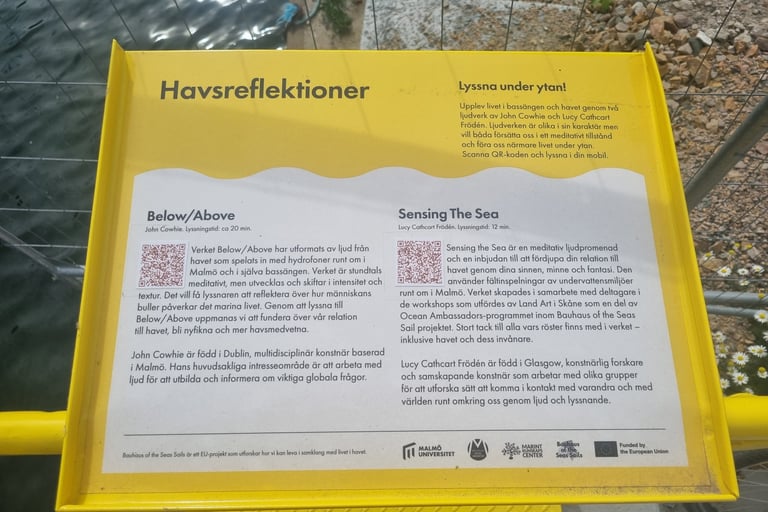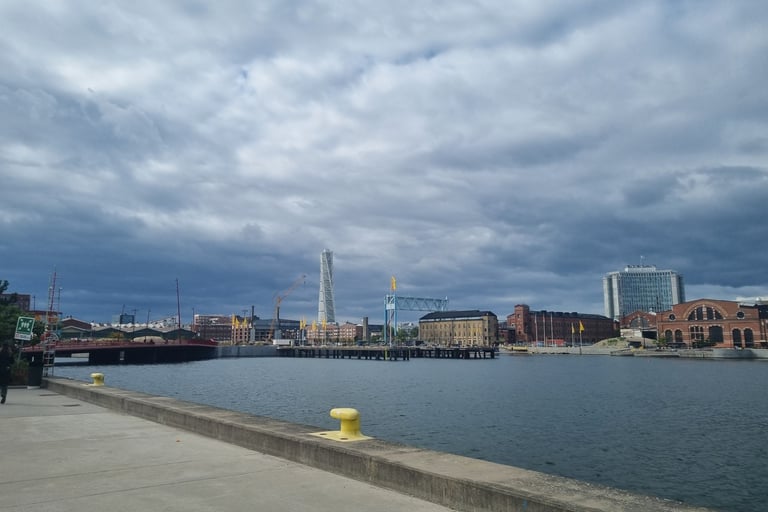Why we should work with nature instead of against it!
When Cities Give Space Back to Nature, Life Returns
9/16/20254 min read
You may wonder why this question is still relevant in our times. After all, we’ve been talking about sustainability transitions for more than a decade now. Shouldn’t nature already be an integral part of our city-making and our societies?
And yet, we still see cities juggling and struggling with how to implement nature in ways that truly allow ecosystems to thrive.
In our modern age we keep talking about “creating more nature” so that we as humans can thrive. But we keep missing the point. We don’t need to create space for nature. We don’t need to create nature at all it has always been there. Mountains, rivers, fields, and meadows existed long before our cities. What we need to do is to create the conditions for nature to thrive.
These words have been on my mind since I attended the BLOXHUB event on the New European Bauhaus, the closing gathering in Copenhagen. Two landscape architects reminded us how crucial nature is, and how we still fail to truly integrate it into urban plans, architecture, and design.
Rikke Gram (Creative Director & Senior Partner at Schønherr) highlighted that, if we look from a topographic lens, "buildings are only details". Nature has been there long before us. Cities and buildings are small markings on a much larger system of our planet.
I agree, but I also want to challenge this point. Because while nature is the larger canvas, cities are still main drivers in transforming not only our urban landscapes but also the rural and agricultural ones around them. Cities have historically depended on extractive landscapes - shaping farmland, forests, mines and coastlines - to sustain their growth. This shows us that the picture is not black and white. It is complex.
Still, one reminder remains: Mother Earth is much bigger than us. We may dominate with our numbers, our buildings, and our infrastructures, but we are small actors in comparison to oceans, mountains, and ecosystems. And we must treat the Earth with care, giving it more space to thrive.
To truly transform our cities and our urban–rural systems, we need to give back space to nature. We don’t need to control it - nature is its own system, its own agent. We are not here to form it; we are here to live with it. Even cities like Copenhagen, often celebrated as frontrunners in sustainable practices, struggle with this challenge, as noted by Mette Skjold, CEO and Senior Partner at SLA.
This lesson is visible in Malmö. In the former wharf basin, once a polluted and lifeless space, a transformation is underway. Two hundred years ago, this was ocean, before the harbor was expanded and the land reclaimed. After the decline of the shipbuilding industry in the late 20th century, the harbor was left polluted, both on land and in the water, unable to sustain marine life.
Thanks to the work of Michael Palmgren, the Marine Education Center (Naturum Öresund) and Malmö City, change is now taking place. The toxic ground was covered with layers of gravel, sand, and rocks. Within just three months, eelgrass began to return, slowly growing back. Over the following months, more and more life appeared, monitored both by Palmgren and researchers from the University of Gothenburg.
What’s remarkable is that this happened without human planting or intervention, no eelgrass was seeded. The only action was providing the basic conditions: healthy ground. Compared to other places, life is returning to Malmö’s waters much faster than expected. Researchers don’t yet know why. But one lesson is already clear: nature doesn’t need us, it can take care of itself. We don’t need to control it. We need to give back space to it, so it can thrive on its own terms.
The question now is: how can we share this knowledge and these experiences more widely? How can we enable more of these transformations to help our planet heal and mitigate climate change?
One key aspect is recognizing that transformation is not only technical but emotional. We are guided by culture, habits, and relationships. To transform our habits, we need to reconnect with nature and with more-than-human actors. We need to relearn how, for centuries, people lived alongside nature, in a regenerative culture that treated land and ocean as partners, not resources.
How do we get there? Design can help. Drawing on urban design methods such as sound, narratives, as well as cultural design can help us to recognize and build relationships with other voices that are part of our urban systems. But we as designers, architects or urban planners often have limited knowledge on what goes beyond the built environment, therefore we need advocates and ambassadors - for the ocean, for ecosystems on land - to keep reminding us and speaking up for those species whose voices are not heard.
Imagine this: you stand at the edge of the wharf, looking out. At first, you see only the blank surface of the ocean, the still water of a former harbor basin. But then, through a sound installation, you begin to hear the hidden life beneath. That moment gives you a deeper sense of belonging and connection.
There is already inspiring work taking place, through initiatives like the Bauhaus of the Seas Sails project, the UN Ocean Literacy Decade, and the efforts of many dedicated professionals. Here in Malmö, this includes Michael Palmgren and the design teams at Malmö University. Similar energy can be found at TU Delft, with educators such as Irene Luque Martín (Centering Designing Otherwise) and the Justice by Design Studio with Irene Luque Martín and Johnathan Subendran - alongside many others contributing to this growing movement.
On the ground we see regenerative initatives are bubbling. And it feels like something bigger is underway. Regeneration is not a distant vision but something already emerging. The task ahead is to amplify these efforts, connect them across disciplines and places, and learn from them so that we can reshape our cities and societies.
By creating the conditions for nature to thrive, we also create the foundations for more just, resilient, and life-centered futures.




Former wharf’s basin in Malmö